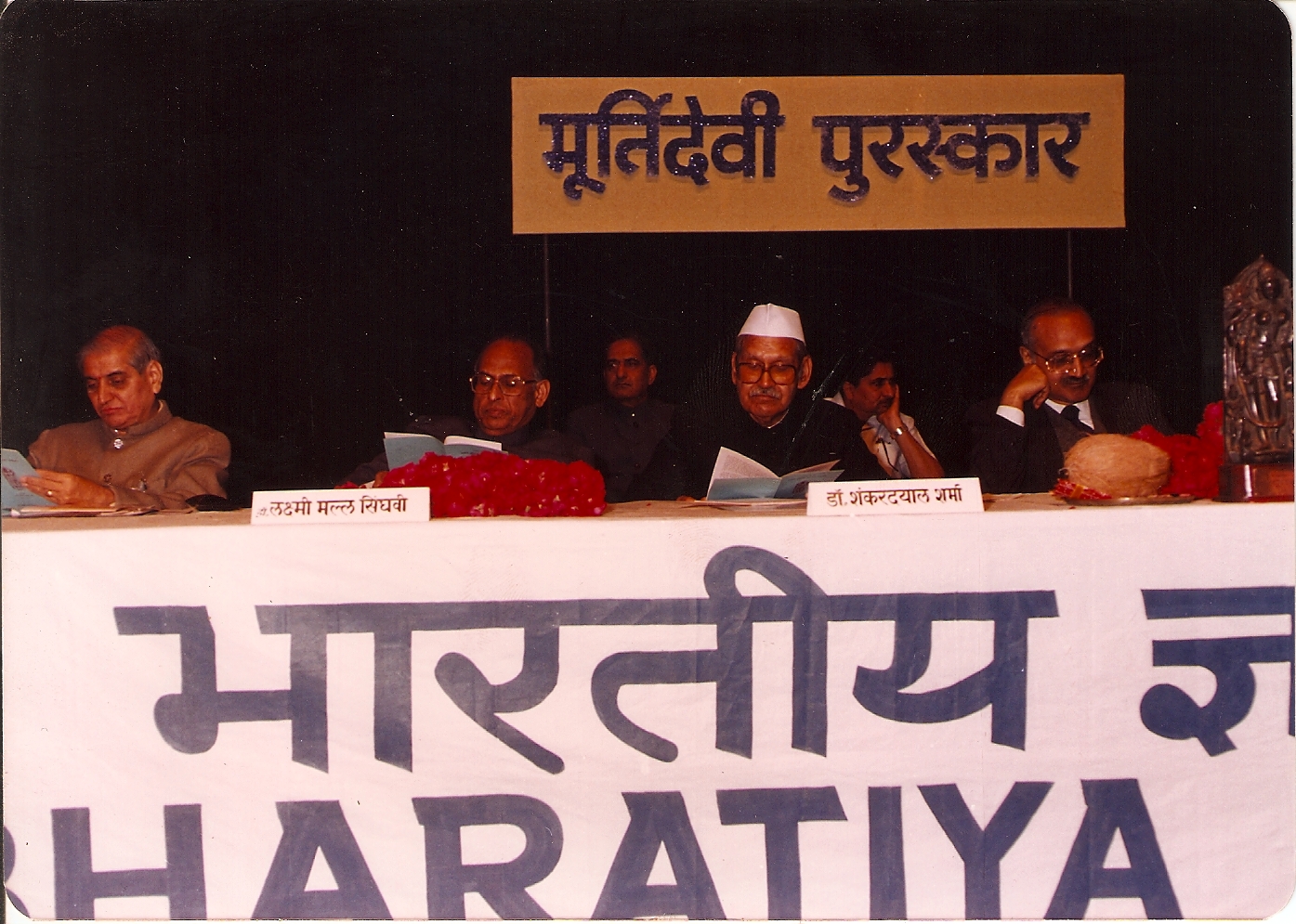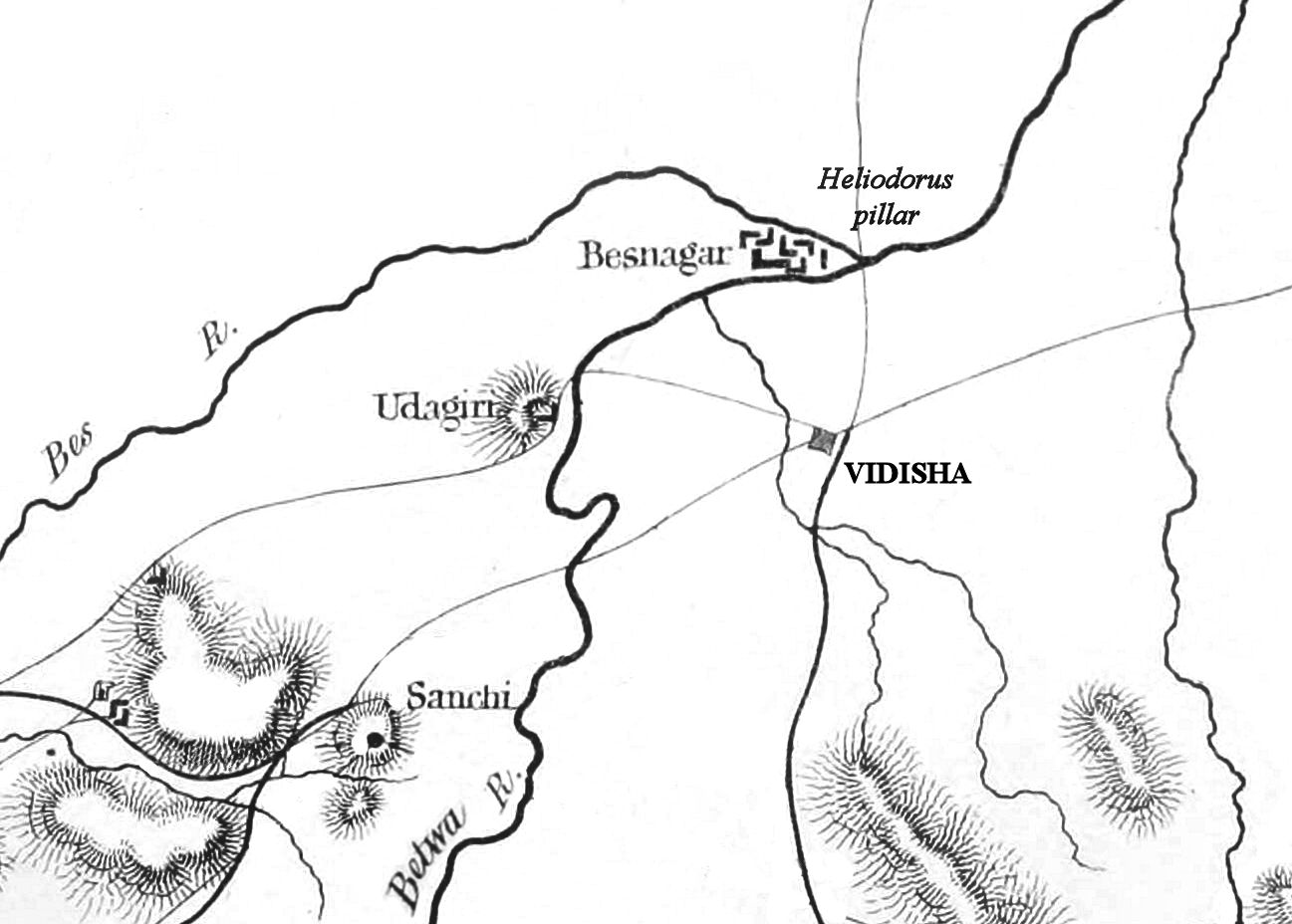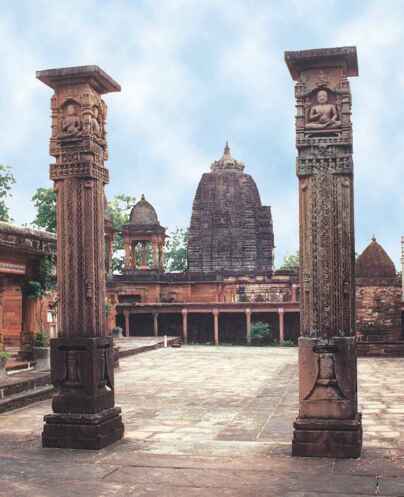|
Shatkhandagama
The (Sanskrit: "Scripture in Six Parts") is the foremost and oldest Digambara Jain sacred text. According to Digambara tradition, the original canonical scriptures of the Jains were totally lost within a few centuries of ''Nirvana'' of Mahavira. Therefore the ''Ṣaṭkhaṅḍāgama'' is the most revered Digambara text that has been given the status of ''āgama''. The importance of the ''Ṣaṭkhaṅḍāgama'' to the Digambaras can be judged by the fact that, the day its ''Dhavalā'' commentary was completed, it is commemorated on the ''Śrūta Pañcami'', a day when all the Jain scriptures are venerated. The ''Ṣaṭkhaṅḍāgama'', the first ''āgama'', is also called the "Prathama Śrūta-Skandha", while the ''Pancha Paramāgama'' by Kundakunda are referred to as the second ''āgama'' or Dvitiya Śrūta-Skandha. Origins It is said to have been based on oral teaching of the Digambara monk, acharya ''Dharasena'' (1st Century CE). According to the tradition, alarmed a ... [...More Info...] [...Related Items...] OR: [Wikipedia] [Google] [Baidu] |
Digambara
''Digambara'' (; "sky-clad") is one of the two major schools of Jainism, the other being '' Śvētāmbara'' (white-clad). The Sanskrit word ''Digambara'' means "sky-clad", referring to their traditional monastic practice of neither possessing nor wearing any clothes. Digambara and Śvētāmbara traditions have had historical differences ranging from their dress code, their temples and iconography, attitude towards female monastics, their legends, and the texts they consider as important. Digambara monks cherish the virtue of non-attachment and non-possession of any material goods. Monks carry a community-owned ''picchi'', which is a broom made of fallen peacock feathers for removing and thus saving the life of insects in their path or before they sit. The Digambara literature can be traced only to the first millennium, with its oldest surviving sacred text being the mid-second century '' Ṣaṭkhaṅḍāgama'' "Scripture in Six Parts" of Dharasena (the Moodabidri manuscrip ... [...More Info...] [...Related Items...] OR: [Wikipedia] [Google] [Baidu] |
Jainism
Jainism ( ), also known as Jain Dharma, is an Indian religion. Jainism traces its spiritual ideas and history through the succession of twenty-four tirthankaras (supreme preachers of ''Dharma''), with the first in the current time cycle being Rishabhadeva, whom the tradition holds to have lived millions of years ago, the twenty-third ''tirthankara'' Parshvanatha, whom historians date to the 9th century BCE, and the twenty-fourth ''tirthankara'' Mahavira, around 600 BCE. Jainism is considered to be an eternal '' dharma'' with the ''tirthankaras'' guiding every time cycle of the cosmology. The three main pillars of Jainism are '' ahiṃsā'' (non-violence), '' anekāntavāda'' (non-absolutism), and ''aparigraha'' (asceticism). Jain monks, after positioning themselves in the sublime state of soul consciousness, take five main vows: '' ahiṃsā'' (non-violence), '' satya'' (truth), ''asteya'' (not stealing), '' brahmacharya'' (chastity), and ''aparigraha'' (non-possessiveness ... [...More Info...] [...Related Items...] OR: [Wikipedia] [Google] [Baidu] |
Prakrit
The Prakrits (; sa, prākṛta; psu, 𑀧𑀸𑀉𑀤, ; pka, ) are a group of vernacular Middle Indo-Aryan languages that were used in the Indian subcontinent from around the 3rd century BCE to the 8th century CE. The term Prakrit is usually applied to the middle period of Middle Indo-Aryan languages, excluding earlier inscriptions and the later Pali. ''Prākṛta'' literally means "natural", as opposed to '' saṃskṛta'', which literally means "constructed" or "refined". Prakrits were considered the regional spoken (informal) languages of people, and Sanskrit was considered the standardized (formal) language used for literary, official and religious purposes across Indian kingdoms of the subcontinent. Literary registers of Prakrits were also used contemporaneously (predominantly by śramaṇa traditions) alongside Classical Sanskrit of higher social classes. Etymology The dictionary of Monier Monier-Williams (1819–1899), and other modern authors however, interpr ... [...More Info...] [...Related Items...] OR: [Wikipedia] [Google] [Baidu] |
Mudabidri
Moodabidri ( kn, ಮೂಡುಬಿದಿರೆ ''Mūḍubidire''; also called Mudbidri, Moodbidre and Bedra), is a town and taluk in Dakshina Kannada district. It lies 34 km northeast of the district headquarters, Mangalore, in Karnataka, India. Because of widely grown bamboo in ancient days, this place was named as ''Moodabidri''. ''Moodabidri'' comes from two Tulu words, ''mūḍu'' "east" and ''bidiru'' "bamboo". Its average elevation is . Demographics India census, Moodabidri had a population of 25,710. Males constitute 48% of the population and females 52%. Moodabidri has an average literacy rate of 88.57%, Male literacy is 93.13%, and female literacy is 84.13%. Moodabidri basically contains two villages: Pranthya and Marnad. Moodabidri is also called as "Jaina Kashi of the South". Location Moodabidri is on National Highway 169 (old NH 13). It is accessible from Mangalore city (34 km away) by road. Mangalore International Airport is 23 km away ... [...More Info...] [...Related Items...] OR: [Wikipedia] [Google] [Baidu] |
Routledge
Routledge () is a British multinational publisher. It was founded in 1836 by George Routledge, and specialises in providing academic books, journals and online resources in the fields of the humanities, behavioural science, education, law, and social science. The company publishes approximately 1,800 journals and 5,000 new books each year and their backlist encompasses over 70,000 titles. Routledge is claimed to be the largest global academic publisher within humanities and social sciences. In 1998, Routledge became a subdivision and imprint of its former rival, Taylor & Francis Group (T&F), as a result of a £90-million acquisition deal from Cinven, a venture capital group which had purchased it two years previously for £25 million. Following the merger of Informa and T&F in 2004, Routledge became a publishing unit and major imprint within the Informa "academic publishing" division. Routledge is headquartered in the main T&F office in Milton Park, Abingdon, Oxfords ... [...More Info...] [...Related Items...] OR: [Wikipedia] [Google] [Baidu] |
Bharatiya Jnanapitha
Bharatiya Jnanpith a literary and research organization, based in New Delhi, India, was founded on February 18, 1944Encyclopaedia of Indian literature vol. 1, p. 298 1987, Sahitya Akademi, by Sahu Shanti Prasad Jain of the Sahu Jain family and his wife Rama Jain to undertake systematic research and publication of Sanskrit, Prakrit, Pali and Apabhramsha texts and covering subjects like religion, philosophy, logic, ethics, grammar, astrology, poetics, etc.jnanpith.net , Bhartiya Jnanpith Official website Its research and publication programme started with the publication of the Dhavala texts. A temple at |
Hindi Granth Karyalay
Hindi Granth Karyalay is an Indian publishing house and specialized book store dealing in books pertaining to Jainology and Indology in English, Hindi, Sanskrit, Prakrit and Apabhramsha. It was established in Mumbai, India in 1912 by its founder Nathuram Premi. It publishes and distributes serials, monographs, and scholarly publications on Indian religions, philosophy, history, culture, arts, architecture, archaeology, language, literature, linguistics, musicology, mysticism, yoga, tantra, occult, medicine, astronomy, astrology and other related subjects, and to date have published over 100 works of noted Indian and International authors and scholars. History Establishment On 24 September 1912, Pandit Nathuram Premi founded the publishing house ''Hindi Granth Ratnākar Kāryālay'' (now known as ''Hindi Granth Karyalay'') at C.P. Tank, Mumbai. It was to become the foremost Hindi publishing house in India and is also the oldest bookstore of Mumbai. Born on 26 November 1881 ... [...More Info...] [...Related Items...] OR: [Wikipedia] [Google] [Baidu] |
Vidisha
Vidisha (विदिशा, formerly known as Bhelsa and known as Besnagar in ancient times) is a city in central Madhya Pradesh, India. It is located 62.5 km northeast of the state capital, Bhopal. The name "Vidisha" is derived from the nearby river "Bais", mentioned in the Puranas. The district was created as Bhilsa District in 1904 by joining the tehsils of Vidisha (also known as Bhilsa) and Basoda (but not Basoda State) which were then part of Gwalior state. After India's independence in 1947, the former princely state of Gwalior became part of Madhya Bharat state, which was formed in 1948. Vidishā was the administrative headquarters of Bhelsa, or Bhilsa, during the Medieval period. It was renamed Vidisha in 1956. Vidisha is also amongst the 112 Aspirational District in the Aspirational District Programme launched by NITI Aayog in 2018. Demographics As of the 2011 Census of India, Vidisha had a population of 155,959. Males constitute 53.21% of the population and ... [...More Info...] [...Related Items...] OR: [Wikipedia] [Google] [Baidu] |
Namokar Mantra
The Ṇamōkāra mantra or Navkar Mantra is the most significant mantra in Jainism, and one of the oldest mantras in continuous practice. This is the first prayer recited by the Jains while meditating. The mantra is also variously referred to as the ''Pancha Namaskāra Mantra'', ''Namaskāra Mantra'', ''Navakāra Mantra'', ''Namaskāra Mangala'' or ''Paramesthi Mantra''. Below is the meaning of Namokar Mantra line by line, wherein the devotee first bows to the five supreme souls or Pañca-Parameṣṭhi: *'' Arihant''— Those who have destroyed the four inimical ''karmas'' *'' Siddha'' — The persons who have achieved "Siddhi" *''Acharyas'' — The teachers who teach how to behave / live one's life ( Acharya = one who teaches Aacharan ) *''Upadhyaya'' — Preceptor of less advanced ascetics *'' Sādhu'' — The monks or sages in the world practicing Samyak Charitra (right conduct) *The practitioner also says that by bowing to all these five supreme souls, *All of his or h ... [...More Info...] [...Related Items...] OR: [Wikipedia] [Google] [Baidu] |
Karma In Jainism
Karma is the basic principle within an overarching psycho-cosmology in Jainism. Human moral actions form the basis of the transmigration of the soul ('). The soul is constrained to a cycle of rebirth, trapped within the temporal world ('), until it finally achieves liberation ('). Liberation is achieved by following a path of purification. Jains believe that karma is a physical substance that is everywhere in the universe. Karma particles are attracted to the soul by the actions of that soul. Karma particles are attracted when we do, think, or say things, when we kill something, when we lie, when we steal and so on. Karma not only encompasses the causality of transmigration, but is also conceived of as an extremely subtle matter, which infiltrates the soul—obscuring its natural, transparent and pure qualities. Karma is thought of as a kind of pollution, that taints the soul with various colours ('' leśyā''). Based on its karma, a soul undergoes transmigration and reincar ... [...More Info...] [...Related Items...] OR: [Wikipedia] [Google] [Baidu] |
Balachandra Shastri
Pandit Balachandra Siddhanta-Shastri (पंडित बालचंद्र सिद्धान्तशास्त्री) was a scholar and linguist who bridged classical and modern scholarship in Jainism during the mid-20th century. Life Born in 1905 at Sonrai, in the district of Sagar in Bundelkhand, Madhya Pradesh, he attended the traditional Jain institution at Sadhumal. He later studied at Kashi Vidyapith. He worked for several Jain institutions in India during his life as a scholar. His efforts resulted in the publication of several major Jain texts. He died in Hyderabad in 1985. Contributions His contributions include * Satkhandagama along with Dhavala: volumes 6-16, translation.http://www.jainworld.com/JWHindi/Books/shatkhandagama-5/fristpage.pdf SHATKHANDAGAMA OF PUSHPADANTA AND BHOOTABALI WITH THE COMMENTARY DHAVALA OF VEERASENACHARYA * Tiloyapannatti, vol. 1-2, translation. * Padmanandi's Panchvinshati, translation and commentary. * Jain Lakshnavali (Jai ... [...More Info...] [...Related Items...] OR: [Wikipedia] [Google] [Baidu] |
Parwar (Jain)
Parwar, also spelt as Paravāra (परवार in Hindi, पौरपट्ट in Sanskrit inscriptions), is a major Jain community from the Bundelkhand region, which is largely in Madhya Pradesh, but also includes the two districts of Lalitpur and Jhansi in Uttar Pradesh. Apart from them, Nagpur district (Maharashtra) have also a very large Parwar community. There is an area in Itwari of Nagpur known as Parwar-Pura having large number of Parwar's homes and shops . Most of the Nagpur's Parwar are migrated from Sagar, Deori, and other small villages of Sagar District of MP. Parwar exclusively follow the Digambar Jain tradition. Parwar usually preferred their marriage within community. There are 12 Gotra in Parwar community. Each Gotra has 12 Moor (lineages). A marriage within the same gotra or lineage are not allowed. Traditionally a marriage within any of the 8 branches (the moor of boy or girl, mother's family, father's mother's family etc) was not permitted and hence the ... [...More Info...] [...Related Items...] OR: [Wikipedia] [Google] [Baidu] |






